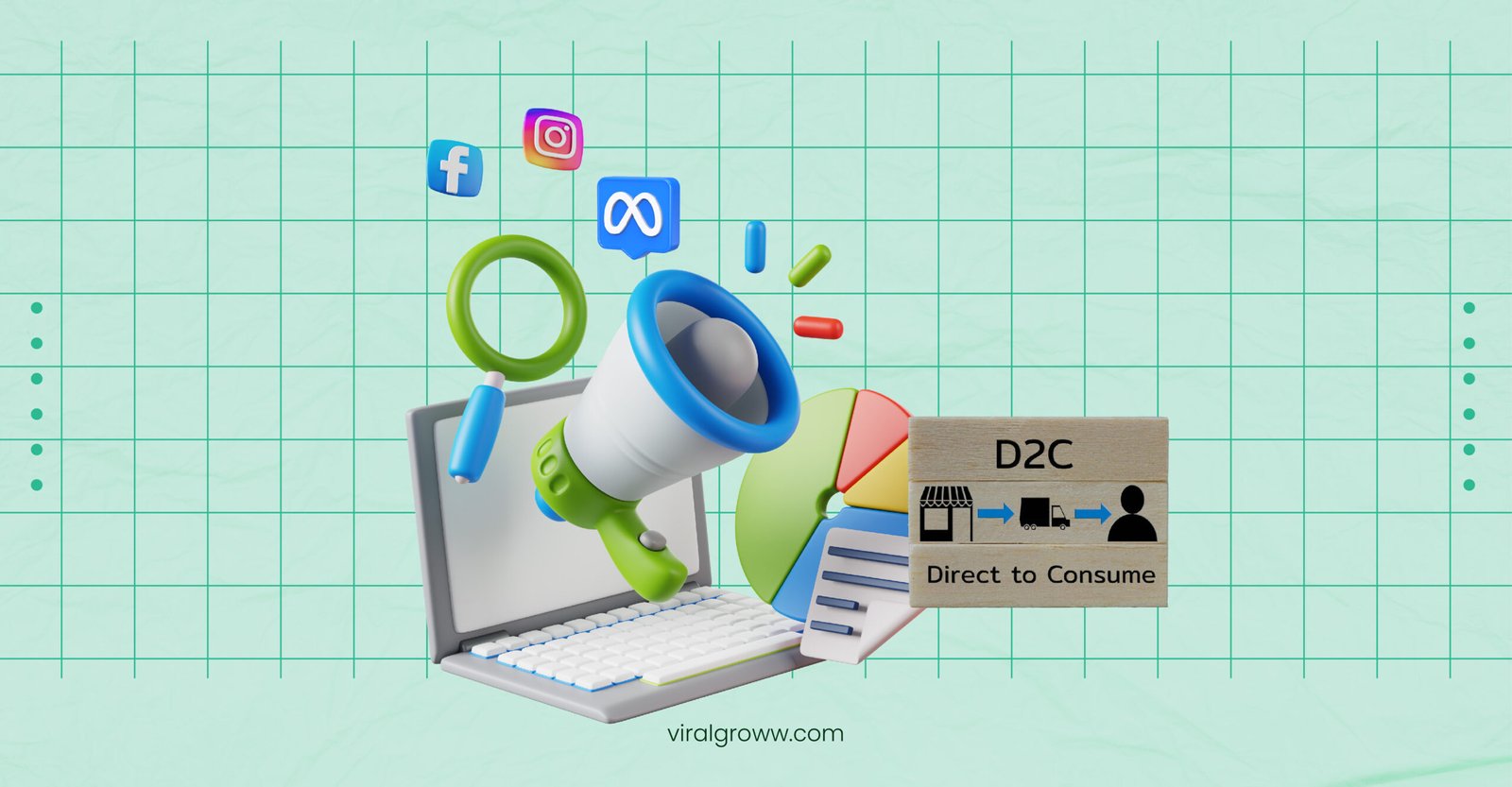Table of Contents
Are you struggling to keep up with the ever-evolving world of Meta Ads? 🤔
As we approach 2025, Direct-to-Consumer (D2C) brands face an increasingly complex digital advertising landscape. The Meta ecosystem, encompassing Facebook, Instagram, and other platforms, continues to evolve at breakneck speed, leaving many marketers feeling overwhelmed and uncertain.
But fear not! 💪 This comprehensive guide is your roadmap to mastering Meta Ads in 2025. We’ll demystify the latest trends, uncover powerful strategies, and reveal insider tips that will give your D2C brand the competitive edge it needs. From setting up your account to leveraging AI-powered tools, we’ve got you covered.
Get ready to dive deep into the world of Meta Ads. We’ll explore everything from crafting compelling ad creatives to optimizing your budget for maximum ROI. By the end of this guide, you’ll be equipped with the knowledge and confidence to dominate your niche and drive unprecedented growth for your D2C brand. Let’s embark on this journey together and unlock the full potential of Meta Ads in 2025!
Understanding Meta Ads in 2025
Evolution of Meta Platforms
Meta’s advertising platforms have undergone significant transformations since their inception. By 2025, these changes have revolutionized how D2C brands connect with their audiences. Here’s a quick overview of the evolution:
Year | Key Developments |
2021 | Facebook rebrands to Meta |
2022 | Enhanced AR capabilities |
2023 | AI-driven personalization |
2024 | Privacy-first approach |
2025 | Seamless metaverse integration |
Key features for D2C brands
D2C brands now enjoy a suite of powerful features tailored to their needs:
- Hyper-targeted audience segmentation
- Dynamic product catalogs
- Automated A/B testing
- Cross-platform campaign management
- Real-time performance analytics
These features enable D2C brands to create highly personalized and efficient ad campaigns, maximizing their ROI and customer engagement.
Integration with AI and AR technologies
The integration of AI and AR has transformed Meta Ads into a cutting-edge marketing tool. AI-powered algorithms now optimize ad delivery in real-time, while AR features allow customers to virtually try products before purchasing. This synergy has dramatically improved conversion rates and customer satisfaction for D2C brands.
Privacy updates and their impact
In response to growing privacy concerns, Meta has implemented stringent data protection measures. These updates have reshaped how D2C brands collect and utilize customer data:
- Enhanced user consent mechanisms
- Limited cross-app tracking
- Increased data anonymization
While these changes initially posed challenges, they’ve ultimately led to more authentic and trust-based relationships between D2C brands and their customers. Now, let’s explore how to set up your Meta Ads account to leverage these advanced features effectively.
2. Choose your audience location
Setting Up Your Meta Ads Account
Creating a Business Manager account
To kickstart your Meta Ads journey, setting up a Business Manager account is crucial. This centralized platform allows you to manage multiple ad accounts, Pages, and team members efficiently. Follow these steps:
- Visit business.facebook.com
- Click “Create Account”
- Enter your business and personal information
- Add your Facebook Page and ad account
Once set up, invite team members and assign roles to streamline collaboration.
Configuring pixel and conversion tracking
The Meta Pixel is essential for tracking user behavior and measuring ad performance. Here’s how to set it up:
- In Business Manager, navigate to “Data Sources” > “Pixels”
- Click “Add” and name your pixel
- Install the pixel code on your website
- Set up event tracking for specific actions (e.g., purchases, add to cart)
Event Type | Description | Example Code |
PageView | Tracks page loads | fbq(‘track’, ‘PageView’); |
Purchase | Tracks completed purchases | fbq(‘track’, ‘Purchase’, {value: 30.00, currency: ‘USD’}); |
Defining custom audiences
Custom audiences help target specific groups based on their interactions with your brand:
- Website visitors
- Customer list uploads
- App activity
- Engagement on Meta platforms
To create a custom audience:
- Go to “Audiences” in Ads Manager
- Click “Create Audience” > “Custom Audience”
- Choose your audience source and define parameters
Setting up catalog for dynamic ads
Dynamic ads automatically showcase your product inventory. To set up a catalog:
- In Business Manager, go to “Data Sources” > “Catalogs”
- Click “Add” and select your catalog type
- Choose how to upload your product data (e.g., manual upload, API)
- Map your product attributes to Meta’s fields
With these foundations in place, you’re ready to craft compelling ad strategies tailored for your D2C brand on Meta platforms.
Crafting Effective Ad Strategies for D2C Brands

A. Choosing the right campaign objectives
When crafting effective ad strategies for D2C brands on Meta platforms, selecting the right campaign objectives is crucial. Your choice will significantly impact your ad delivery and overall performance.
Common objectives for D2C brands include:
- Awareness
- Traffic
- Engagement
- App installs
- Video views
- Lead generation
- Conversions
Objective | Best For | Key Metric |
Awareness | New brands | Reach, Brand lift |
Traffic | Website visits | Click-through rate |
Conversions | Sales | Cost per acquisition |
B. Targeting options and best practices
Meta offers a wealth of targeting options to help D2C brands reach their ideal audience:
- Demographics: Age, gender, location
- Interests: Hobbies, activities, pages liked
- Behaviors: Purchase history, device usage
- Custom Audiences: Based on your customer data
- Lookalike Audiences: Similar to your best customers
Best practices include:
- Start broad and narrow down based on performance
- Use exclusion targeting to avoid ad fatigue
- Regularly update and refine your audience segments
C. Leveraging first-party data
First-party data is invaluable for D2C brands. Here’s how to leverage it:
- Create Custom Audiences using:
- Customer email lists
- Website visitors
- App users
- Customer email lists
- Develop Lookalike Audiences to find new customers
- Use data for personalized ad experiences
D. Implementing retargeting campaigns
Retargeting is essential for D2C brands to re-engage potential customers:
- Set up Website Custom Audiences
- Create dynamic ads showcasing viewed products
- Implement cart abandonment campaigns
- Use sequential messaging to guide customers through the funnel
E. Utilizing influencer partnerships
Influencer partnerships can amplify your D2C brand’s reach on Meta platforms:
- Identify relevant influencers in your niche
- Collaborate on content creation
- Use Branded Content tools for transparent partnerships
- Amplify influencer content through paid promotion
By implementing these strategies, D2C brands can create highly effective Meta ad campaigns that drive awareness, engagement, and conversions. Next, we’ll explore how to optimize your ad creative for maximum impact on Meta platforms.
Optimizing Ad Creative for Meta Platforms
Video content best practices
When it comes to video content on Meta platforms, following these best practices can significantly boost your ad performance:
- Grab attention quickly: Use the first 3 seconds wisely
- Design for sound-off viewing: Include captions or text overlays
- Keep it short: Aim for 15-30 seconds for most ad formats
- Use a clear call-to-action: Tell viewers what to do next
Video Length | Ideal Use Case |
5-15 seconds | Brand awareness |
15-30 seconds | Product showcases |
30-60 seconds | Storytelling or tutorials |
Designing scroll-stopping visuals
To create visuals that make users pause their scrolling:
- Use bold, contrasting colors
- Incorporate movement or animation
- Feature people or products in action
- Utilize white space effectively
Writing compelling ad copy
Craft ad copy that resonates with your D2C audience:
- Lead with benefits, not features
- Use power words to evoke emotion
- Create a sense of urgency or exclusivity
- Keep it concise and scannable
Incorporating user-generated content
Leverage the authenticity of user-generated content (UGC) in your ads:
- Showcase customer reviews and testimonials
- Feature real customers using your products
- Run UGC contests to generate fresh content
- Obtain proper permissions before using UGC
By optimizing your ad creative across these areas, you’ll be well-positioned to capture attention and drive conversions on Meta platforms. Next, we’ll explore the various ad formats available on Meta and how to leverage them effectively for your D2C brand.
Mastering Meta's Ad Formats
Story Ads and Reels
Story Ads and Reels have become the cornerstone of engaging content on Meta platforms. These vertical, full-screen formats offer immersive experiences that capture users’ attention effectively. Here’s a comparison of their key features:
Feature | Story Ads | Reels |
Duration | Up to 15 seconds | Up to 60 seconds |
Interactivity | Swipe-up links | Interactive stickers |
Placement | Stories section | Dedicated Reels tab |
Best for | Quick promotions | Brand storytelling |
To maximize the impact of your Story Ads and Reels:
- Use eye-catching visuals and motion graphics
- Include clear calls-to-action (CTAs)
- Leverage trending audio and effects for Reels
- Keep messaging concise and impactful
Carousel Ads for product showcases
Carousel Ads are ideal for D2C brands looking to showcase multiple products or features. This format allows you to display up to 10 images or videos in a single ad, each with its own link. Here’s how to make the most of Carousel Ads:
- Create a cohesive narrative across slides
- Use high-quality, consistent imagery
- Highlight different product angles or variations
- Include pricing and key features on each slide
Collection Ads for immersive experiences
Collection Ads offer a unique opportunity to create a mini-storefront within the Meta ecosystem. These ads feature a cover image or video followed by product images that users can explore without leaving the platform. To optimize Collection Ads:
- Choose an attention-grabbing cover image
- Curate products that complement each other
- Ensure a smooth transition from ad to product catalog
Messenger Ads for direct communication
Messenger Ads enable direct, personalized communication with potential customers. These ads appear in users’ Messenger home screens and can initiate conversations or direct users to specific actions. To leverage Messenger Ads effectively:
- Use conversational tone in ad copy
- Offer immediate value or assistance
- Prepare automated responses for common queries
- Follow up promptly to maintain engagement
Budgeting and Bidding Strategies

Understanding auction dynamics
Meta’s ad auction system is complex but crucial for D2C brands to understand. The auction determines which ads are shown and at what cost, based on three key factors:
- Bid amount
- Estimated action rates
- Ad quality and relevance
To succeed in Meta’s auction system, D2C brands should focus on:
- Creating high-quality, relevant ads
- Targeting the right audience
- Optimizing for desired actions
Factor | Impact on Auction |
Bid Amount | Higher bids increase chances of winning |
Estimated Action Rates | Higher likelihood of user action improves ad performance |
Ad Quality | Better quality and relevance boost ad delivery |
Setting optimal budgets for D2C brands
D2C brands should approach budgeting strategically:
- Start with a test budget
- Scale gradually based on performance
- Allocate budget across campaigns based on objectives
Choosing between manual and automated bidding
Meta offers two primary bidding strategies:
- Manual bidding: Allows precise control but requires constant monitoring
- Automated bidding: Leverages Meta’s AI for optimal results
For most D2C brands, automated bidding often yields better results due to Meta’s advanced algorithms.
Implementing bid adjustments
Bid adjustments allow fine-tuning of your bidding strategy:
- Increase bids for high-performing placements
- Adjust bids based on user demographics or behaviors
- Implement dayparting to bid higher during peak conversion times
By mastering these budgeting and bidding strategies, D2C brands can maximize their ROI on Meta Ads. Next, we’ll explore how to measure and analyze your ad performance to further refine your strategy.
Measuring and Analyzing Ad Performance

Key metrics for D2C success
For D2C brands, tracking the right metrics is crucial for measuring ad performance. Here are the essential KPIs to focus on:
- Return on Ad Spend (ROAS)
- Customer Acquisition Cost (CAC)
- Conversion Rate
- Click-Through Rate (CTR)
- Cost Per Click (CPC)
Metric | Description | Importance for D2C |
ROAS | Revenue generated per ad dollar spent | Directly impacts profitability |
CAC | Cost to acquire a new customer | Determines scalability |
Conversion Rate | Percentage of clicks that lead to sales | Indicates ad and landing page effectiveness |
CTR | Percentage of impressions that result in clicks | Measures ad relevance and appeal |
CPC | Average cost per ad click | Helps optimize budget allocation |
Using Meta’s analytics tools
Meta’s native analytics tools provide robust insights for D2C brands:
- Ads Manager: Offers real-time performance data and customizable reports
- Audience Insights: Helps understand customer demographics and behaviors
- Attribution Tools: Tracks customer journeys across multiple touchpoints
- Conversions API: Enhances data accuracy and improves optimization
Integrating with third-party analytics platforms
To gain a holistic view of performance, integrate Meta Ads data with:
- Google Analytics
- Shopify Analytics
- Segment
- Mixpanel
These integrations provide deeper insights into customer behavior and lifetime value.
A/B testing for continuous improvement
Implement A/B testing to refine your ad strategy:
- Test one variable at a time (e.g., headline, image, CTA)
- Set clear success metrics
- Run tests for statistically significant periods
- Apply learnings to future campaigns
By consistently measuring, analyzing, and optimizing your Meta Ads performance, D2C brands can achieve better results and higher ROI. Now, let’s explore how to leverage Meta’s AI-powered ad tools to further enhance your advertising efforts.
Navigating Meta's AI-Powered Ad Tools
Leveraging Advantage+ campaigns
Advantage+ campaigns represent Meta’s cutting-edge AI-powered solution for D2C brands. These campaigns utilize advanced machine learning algorithms to optimize ad delivery and performance automatically. Here’s how you can leverage them effectively:
- Simplified campaign setup
- Automated budget allocation
- Dynamic creative optimization
- Real-time performance adjustments
Feature | Benefit |
AI-driven targeting | Reaches most relevant audiences |
Automated bidding | Maximizes ROI across placements |
Creative optimization | Delivers best-performing ad variants |
Utilizing automated ad creation
Meta’s AI tools now offer automated ad creation, streamlining the process for D2C brands. This feature analyzes your product catalog, website content, and historical ad performance to generate compelling ad creatives. Key aspects include:
- Dynamic product showcases
- AI-generated ad copy
- Automated image and video selection
- Personalized ad experiences
Implementing AI-driven audience expansion
AI-driven audience expansion helps D2C brands reach new potential customers by:
- Analyzing existing customer data
- Identifying lookalike audiences
- Discovering untapped market segments
- Continuously refining targeting based on performance
Optimizing with machine learning insights
Machine learning insights provide D2C brands with actionable data to optimize their Meta ad campaigns:
- Performance predictions
- Audience behavior analysis
- Creative element effectiveness
- Cross-channel attribution modeling
By leveraging these AI-powered tools, D2C brands can significantly enhance their Meta ad performance and stay ahead in the competitive digital landscape.
Compliance and Brand Safety
Adhering to Meta’s advertising policies
Meta’s advertising policies are constantly evolving, and it’s crucial for D2C brands to stay up-to-date. Here are key points to remember:
- Prohibited content: Avoid ads featuring illegal products, discriminatory practices, or adult content
- Restricted content: Certain industries (e.g., alcohol, gambling) have specific guidelines
- Ad quality: Ensure your ads are clear, relevant, and not misleading
Table: Common Policy Violations and Solutions
Violation | Solution |
Misleading claims | Use accurate, verifiable information |
Low-quality images | Use high-resolution, relevant visuals |
Excessive text | Keep text concise and within Meta’s guidelines |
Ensuring data privacy compliance
Data privacy is paramount in 2025. D2C brands must:
- Implement robust data collection and storage practices
- Obtain explicit user consent for data usage
- Comply with global regulations like GDPR and CCPA
Brand safety measures in ad placements
Protect your brand’s reputation by:
- Using Meta’s brand safety controls
- Selecting appropriate placement options
- Regularly monitoring where your ads appear
- Utilizing blocklists to avoid unwanted associations
Handling customer feedback and reviews
Effective management of customer interactions is crucial:
- Respond promptly to both positive and negative feedback
- Address concerns professionally and transparently
- Use feedback to improve your products and ad strategies
- Leverage positive reviews in your ad content to build trust
By prioritizing compliance and brand safety, D2C brands can build trust with their audience and maintain a positive reputation on Meta platforms. This approach not only ensures adherence to rules but also enhances overall ad performance and brand perception.
Future-Proofing Your Meta Ads Strategy

Embracing emerging technologies
As Meta continues to innovate, D2C brands must stay ahead of the curve by embracing emerging technologies. Virtual and augmented reality (VR/AR) are becoming increasingly important in advertising, offering immersive experiences for potential customers. Integrate VR/AR elements into your ad campaigns to showcase products in 3D or allow virtual try-ons.
Technology | Potential Applications |
VR/AR | Virtual product demos, immersive brand experiences |
AI | Personalized ad content, predictive analytics |
Blockchain | Transparent ad tracking, secure transactions |
Preparing for cookie-less advertising
With the phasing out of third-party cookies, D2C brands need to adapt their advertising strategies:
- Invest in first-party data collection
- Leverage contextual advertising
- Explore privacy-preserving technologies like Google’s Privacy Sandbox
- Utilize Meta’s Conversions API for accurate tracking
Adapting to changing consumer behaviors
Consumer preferences and behaviors are constantly evolving. To future-proof your Meta Ads strategy:
- Focus on mobile-first experiences
- Incorporate social commerce features
- Emphasize sustainability and ethical practices in messaging
- Leverage user-generated content and influencer partnerships
Staying ahead of platform updates
Meta frequently updates its advertising platforms. To maintain a competitive edge:
- Regularly attend Meta Blueprint training sessions
- Join Meta advertising communities for peer insights
- Follow Meta’s official blogs and announcements
- Experiment with beta features and new ad formats
By implementing these strategies, D2C brands can ensure their Meta Ads approach remains effective and relevant in the ever-changing digital landscape.
Meta Ads have become an indispensable tool for D2C brands in 2025, offering unprecedented opportunities to connect with target audiences across Facebook, Instagram, and other Meta platforms. From setting up your account to crafting effective strategies, optimizing ad creatives, and leveraging AI-powered tools, this guide has covered essential aspects of running successful Meta Ad campaigns. By mastering various ad formats, implementing smart budgeting and bidding strategies, and consistently measuring performance, D2C brands can maximize their return on investment and stay ahead in the competitive digital landscape.
As the Meta ecosystem continues to evolve, it’s crucial for D2C brands to remain adaptable and forward-thinking. Stay informed about the latest trends, prioritize compliance and brand safety, and continuously refine your strategies based on data-driven insights. By embracing innovation and maintaining a customer-centric approach, your brand can thrive in the ever-changing world of Meta Ads and achieve sustainable growth in the years to come.
If you are a D2C brand owner looking to increase your ROI on ad spend and build a loyal customer base, book a free consultation with us today to discover how we can help you achieve your goals.
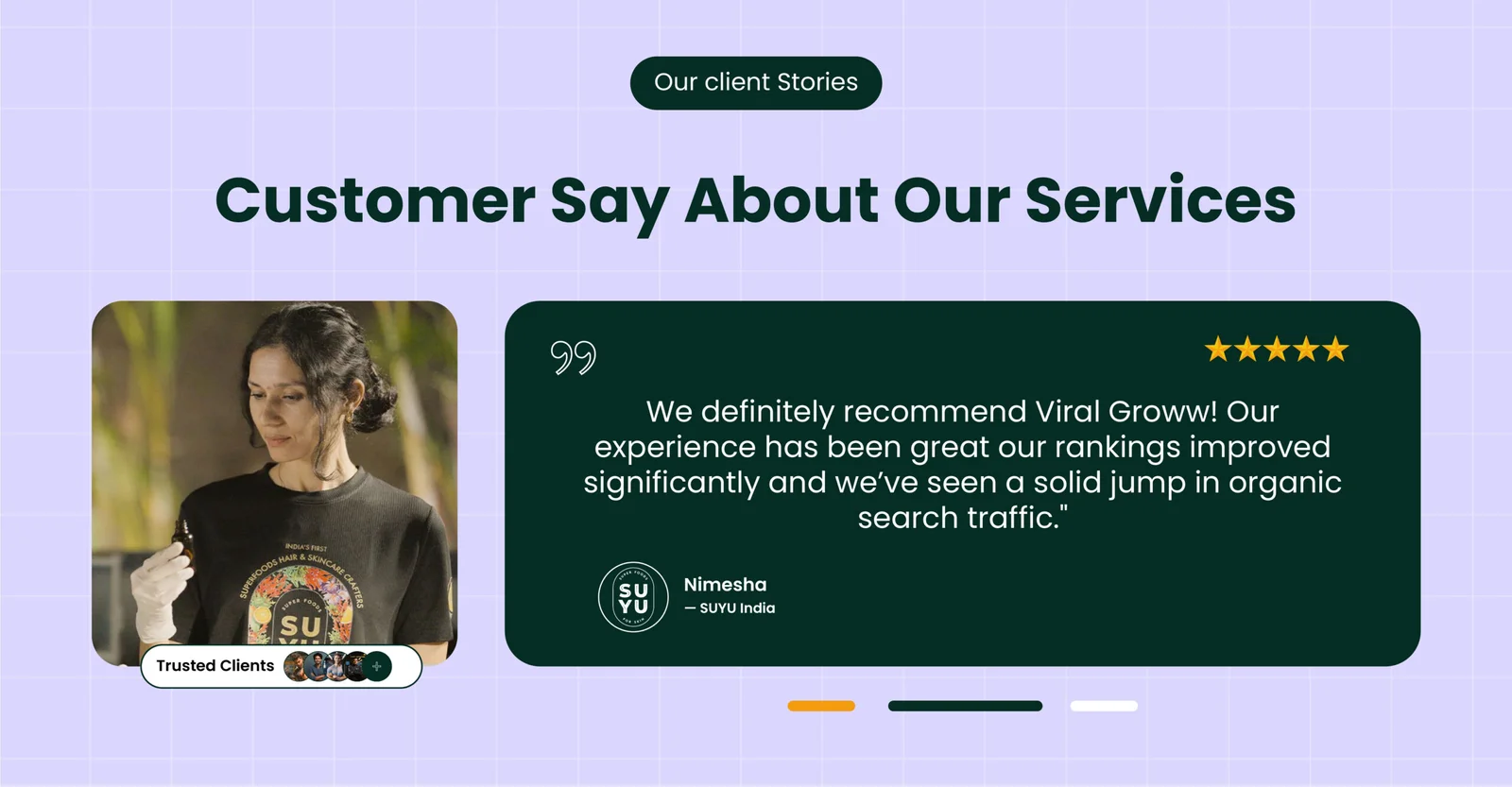
How We 2.5X’d Organic Traffic for SUYU India in Just 5 Months by Following Our White Hat SEO Framework
SUYU India was born with a clear vision—to bring superfood-powered skincare into the Indian market. Co-founded with a deep belief in sustainability.
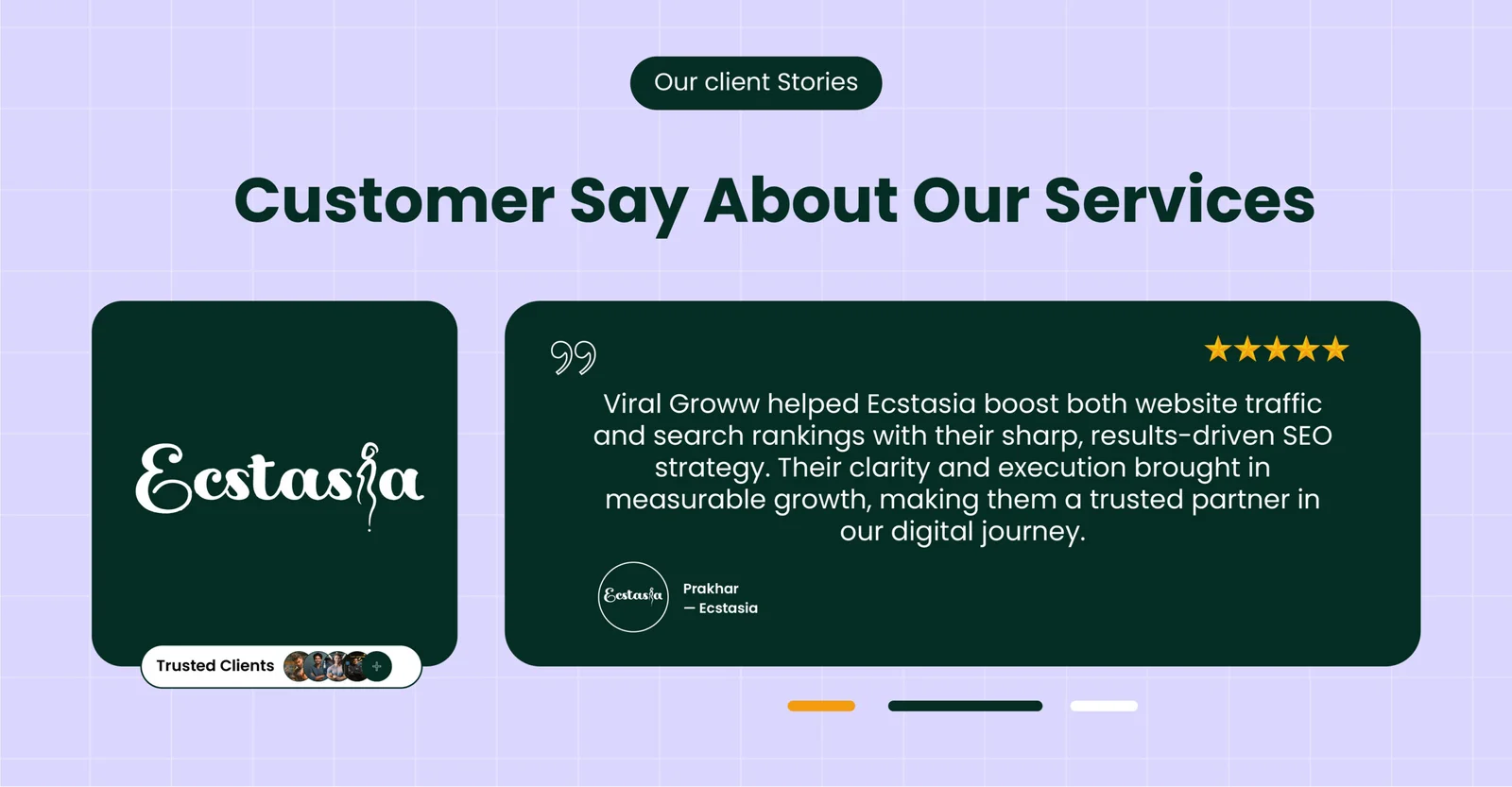
Scaling a Sexual Wellness Brand with SEO – How We Did It for Ecstasia
Ecstasia is a sexual wellness D2C brand started by Prakhar Raj and Hamid Iqbal in December 2024. Prakhar, a school friend of mine, works in a corporate job but has always wanted to start his own business.
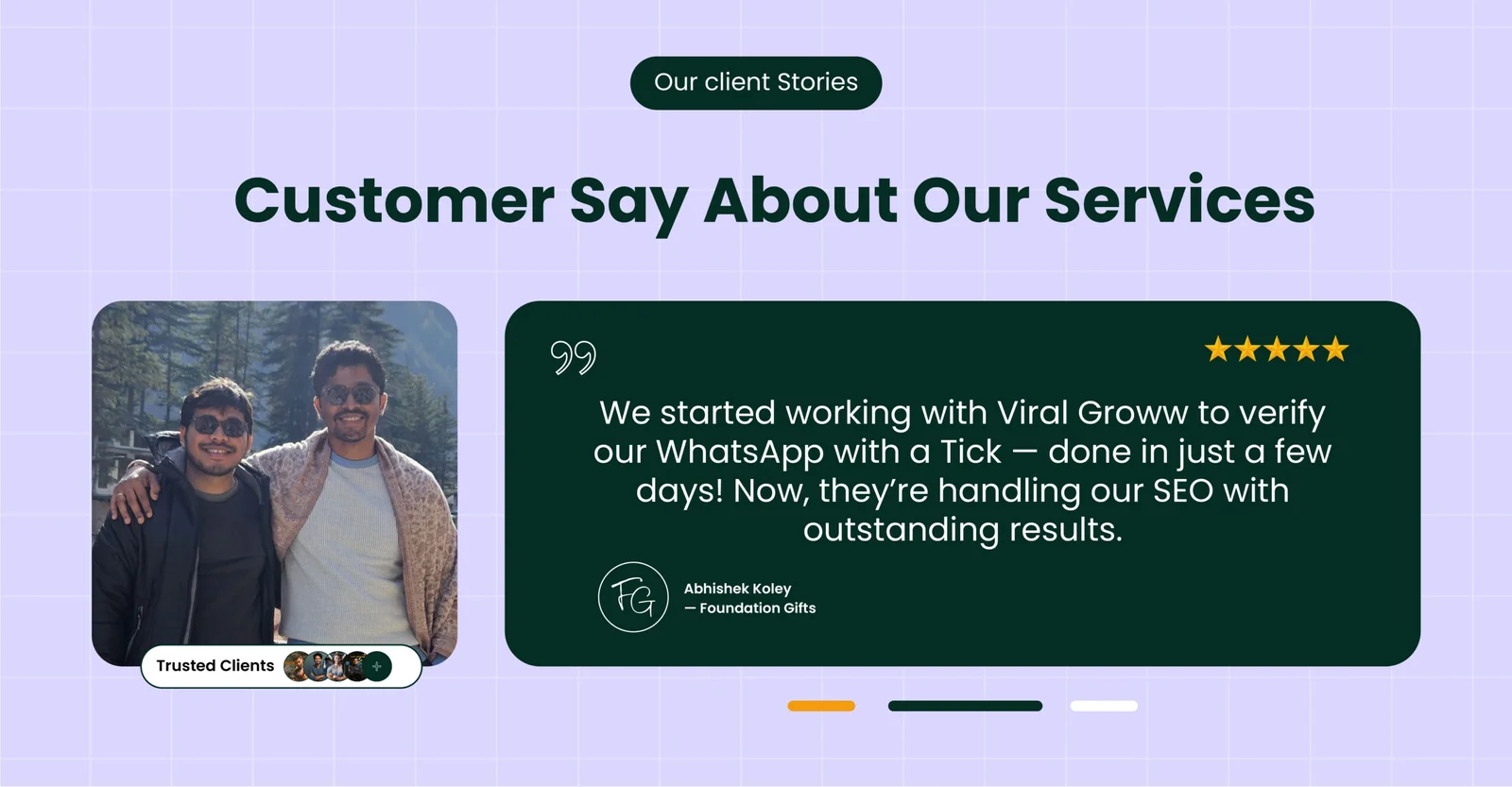
How we got 8.7X Impressions for a gifting D2C brand within 3 Months by doing White Hat SEO
Foundation Gift was started by Rakesh Adak and Abhishek Koley with a simple idea — gifts should feel just as special as the moments they celebrate.
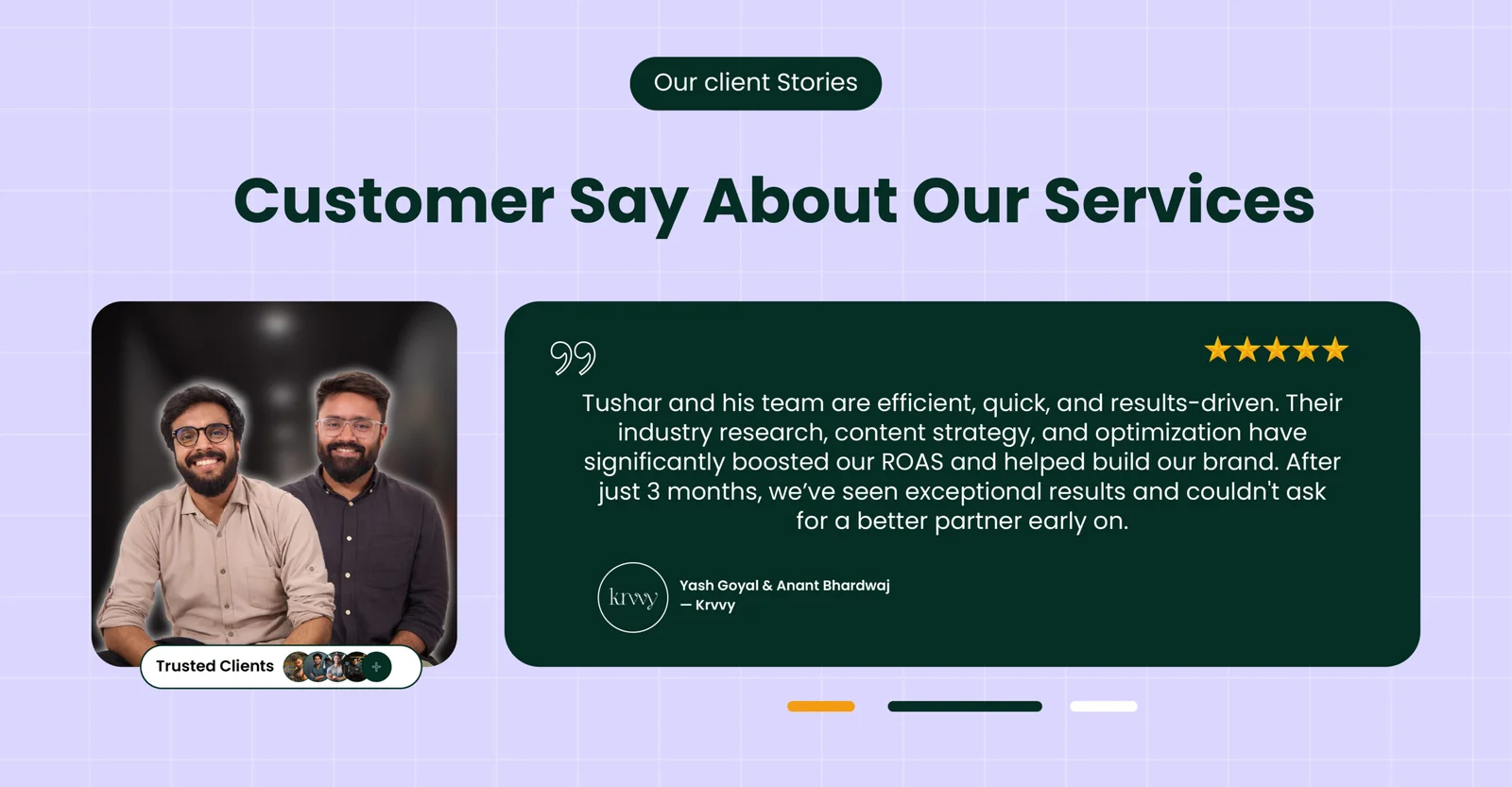
Scaling a Lingerie Brand to 7-Figure Sales in Just 75 Days—Proof Inside!
Krvvy is a modern, forward-thinking lingerie brand committed to redefining comfort and functionality. Designed to elevate the lingerie experience, Krvvy celebrates the beauty of all women, embracing and admiring every curve.
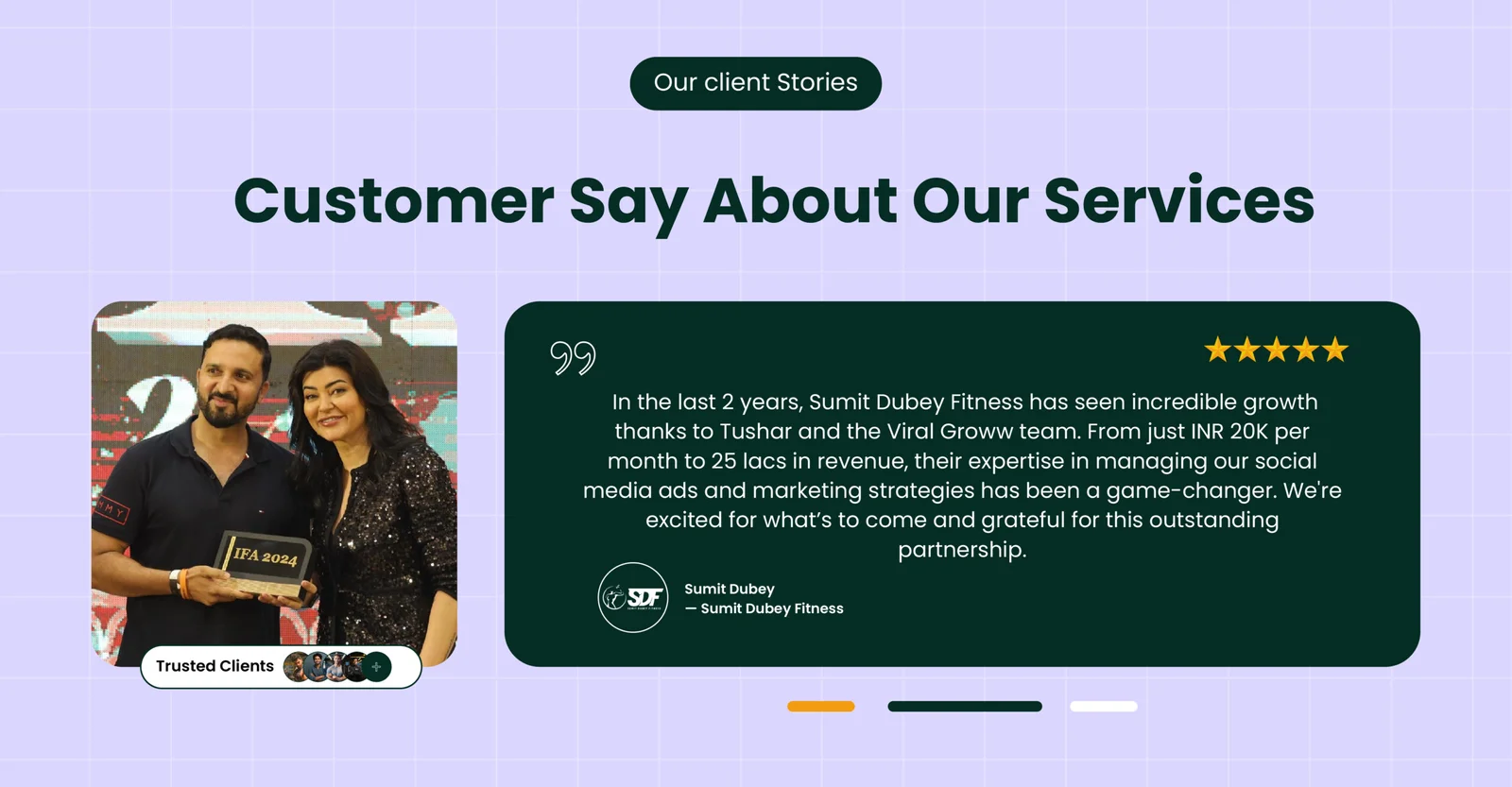
How Sumit Dubey Fitness Classes Transformed into a Fitness Empire with Strategic Digital Marketing
Sumit Dubey Fitness Classes, founded by Sumit Dubey, provides online fitness training with a personalized touch.
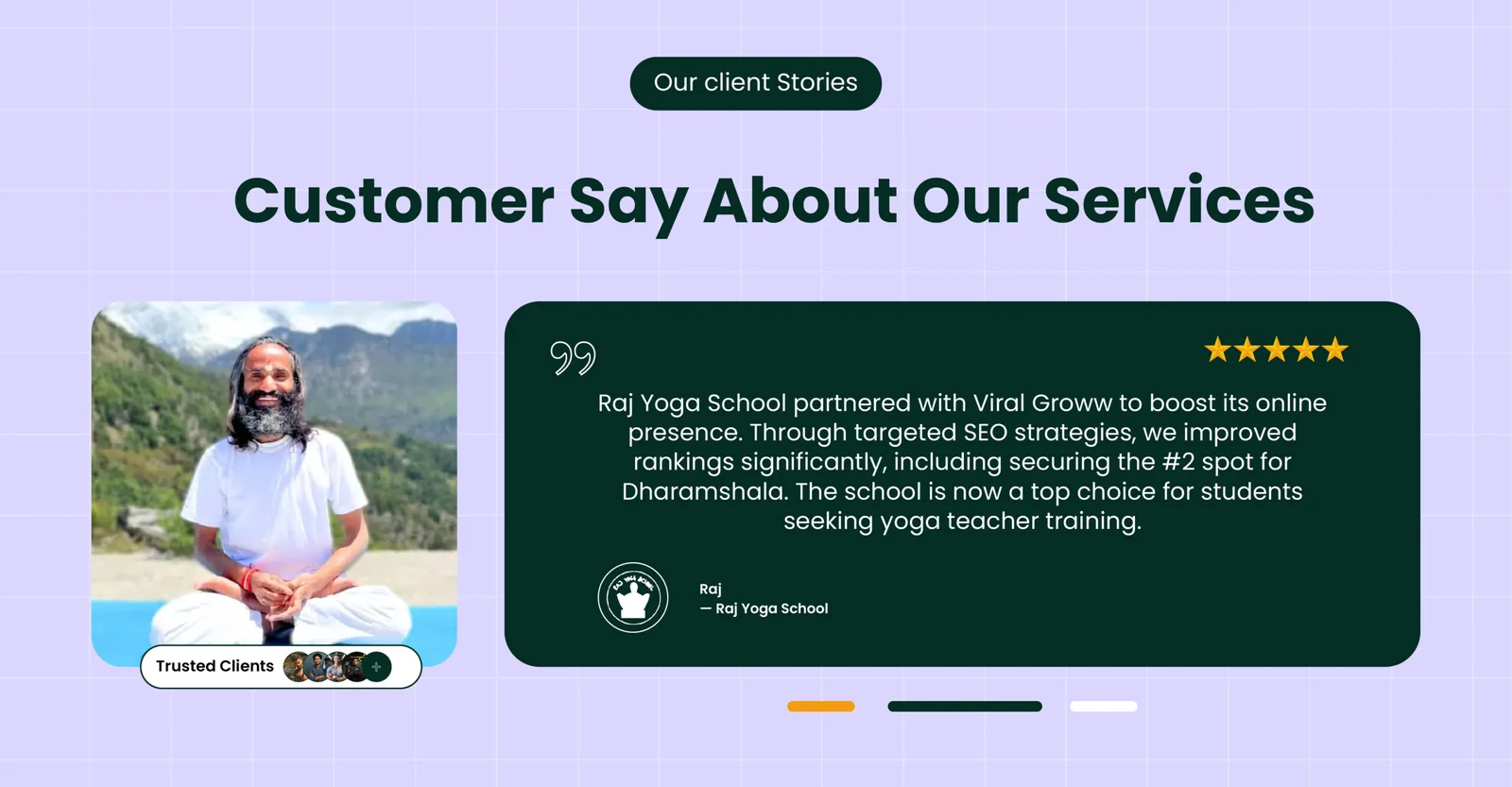
Raj Yoga School’s Journey to the Top of Search Rankings
Nestled between the tranquil peaks of the Himalayas and the sun-kissed beaches of Goa, Raj Yoga School has been a sanctuary for aspiring yoga teachers in India.
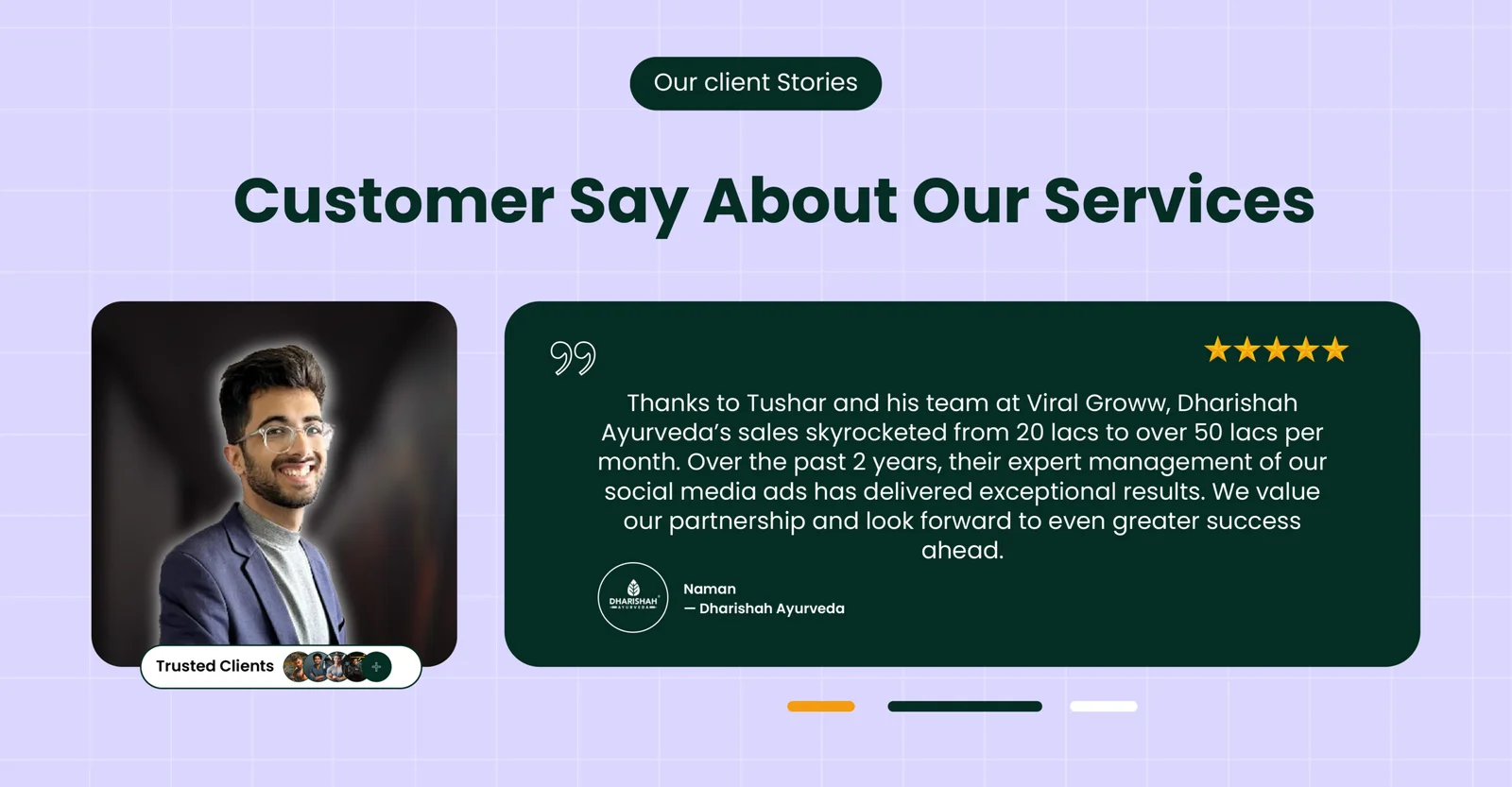
Scaling Dharishah Ayurveda from ₹20 Lakhs to ₹50 Lakhs in Monthly Sales
Dharishah Ayurveda, a promising Ayurvedic brand, had already seen growth through performance marketing, scaling from ₹2 lakhs to ₹20 lakhs in monthly sales (covered in a previous case study).

Building Trust and Revenue for Dharishah Ayurveda with Scalable Facebook Ads
Dharishah Ayurveda, led by CEO Naman Dhamija, is a premium Ayurvedic brand dedicated to promoting natural wellness.
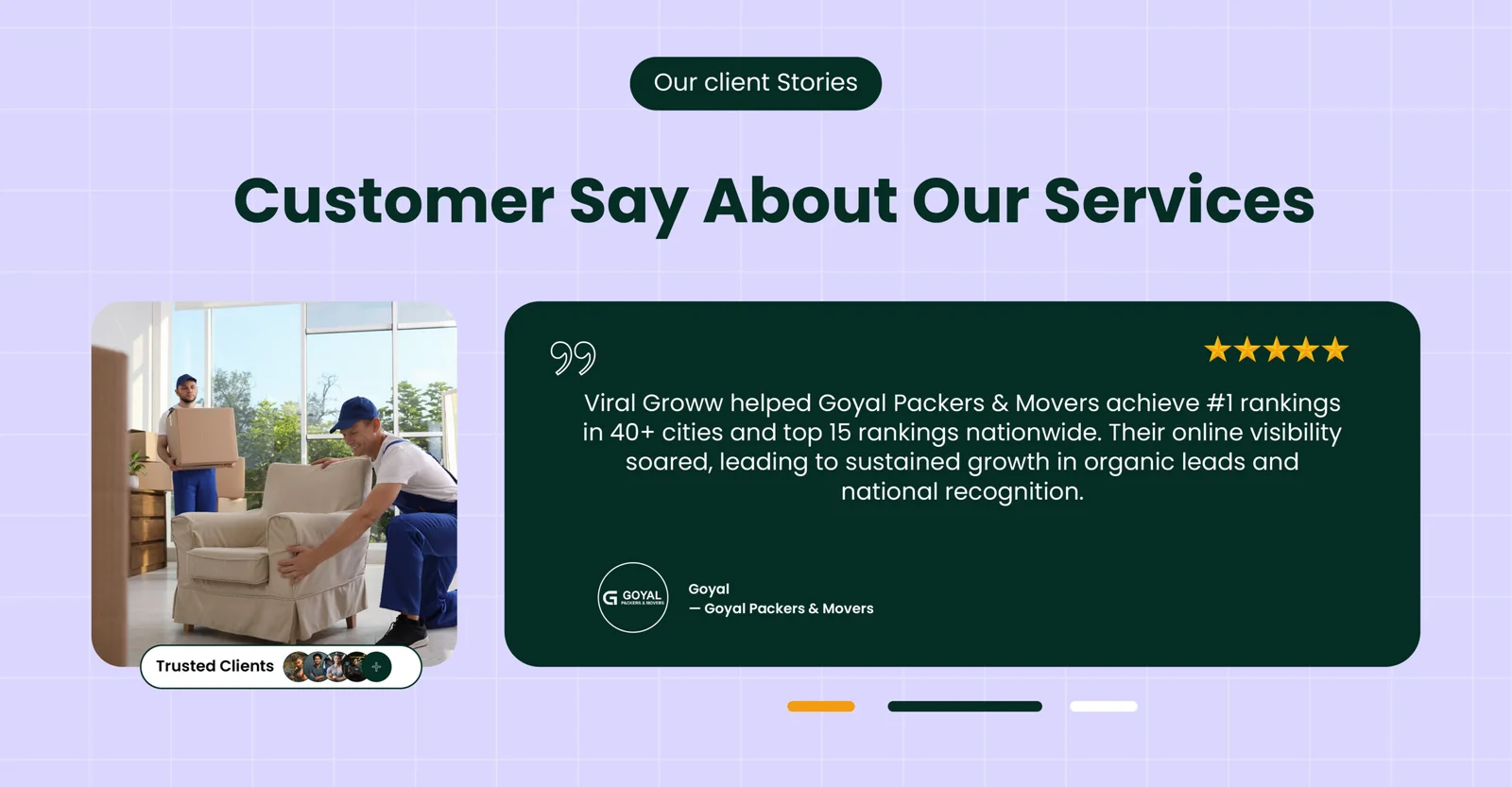
How Goyal Packers & Movers Skyrocketed to #1 in 40+ Cities with White Hat SEO
Goyal Packers and Movers India, owned by Mr. Sampat Singh, is one of the most preferred packers and movers across Northern India, offering exceptional shifting services.


